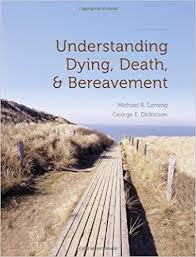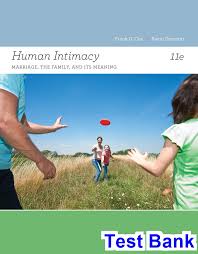Test Bank for Understanding Dying, Death, And Bereavement 7th Edition By Michael R. Leming
Original price was: $55.00.$19.00Current price is: $19.00.
Digital item No Waiting Time Instant Download
Full Title: Understanding Dying, Death, and Bereavement
Edition: 7th edition
ISBN-13: 978-0495810186
Format: PDF
Publisher: CENGAGE Learning (02/09/2010)
Description
Test Bank for Understanding Dying, Death, And Bereavement 7th Edition By Michael R. Leming
TABLE OF CONTENTS
Chapter 1 STUDYING DYING, DEATH, AND BEREAVEMENT 2
Chapter 2 THE AMERICAN EXPERIENCE OF DEATH 15
Chapter 3 GROWING UP WITH DEATH 24
Chapter 4 PERSPECTIVES ON DEATH AND LIFE AFTER DEATH 32
Chapter 5 THE DYING PROCESS 40
Chapter 6 LIVING WITH DYING 50
Chapter 7 DYING IN THE AMERICAN HEALTH CARE SYSTEM 60
Chapter 8 BIOMEDICAL ISSUES AND EUTHANASIA 68
Chapter 9 SUICIDE 78
Chapter 10 DIVERSITY IN DEATH RITUALS 89
Chapter 11 THE BUSINESS OF DYING 102
Chapter 12 THE LEGAL ASPECTS OF DYING 113
Chapter 13 COPING WITH LOSS 123
Chapter 14 GRIEVING THROUGHOUT THE LIFE CYCLE 130
SAMPLE SYLLABUSES 136
CHAPTER 1
STUDYING DYING, DEATH, AND BEREAVEMENT
Chapter Outline
Current Interest in Death and Dying
Why the Increased Interest?
The Mystery of Death
Terrorism
Ethical Issues
Popular Culture
Death Education
Thanatology Classes
Thanatology Publications
Mortality Statistics
Death Etiology and Life Expectancy
Gender Differences in Mortality Rates
Approaches to the Study of Dying and Death
The Biological Approach
The Psychological Approach
The Philosophical Approach
The Anthropological Approach
The Sociological Approach
Structural-Functional Theory
Conflict Theory
Social Exchange Theory
Symbolic Interactionist Theory
Conclusion
Summary
Discussion Questions
Glossary
Suggested Readings
True-False Questions
1. The interdisciplinary study of dying, death, and bereavement is called “thanatology.” True
2. American society formally prepares individuals to deal with dying and death on both personal and emotional levels. False
3. Death appears to be more abstract for those growing up today than for previous generations. True
4. In the early 1940s Hollywood began to produce films around the theme of death when the “good guy” died. False
5. Television specials with a theme of dying and death began emerging in the 1970s in the United States. True
6. Currently there is almost an obsession, and certainly a fascination, with death-related themes in American movies. True
7. The “suicide doctor” in Michigan in the late 20th century was Dr. Jack Kevorkian. True
8. A program for the elderly called Elderhostel does not allow the topic of dying and death to be presented. True
9. A text published in 1959 for thanatology was an anthology by psychologist Herman Feifel titled The Meaning of Death. True
10. Jessica Mitford’s The American Way of Death in 1963 was very favorable toward the funeral industry. False
11. Conflict theory is concerned with explaining the stability of society. False
12. Exchange theory is primarily concerned with the issue of societal maintenance and social equilibrium. False
13. The leading cause of death in the United States today is cardiovascular disease. True
14. Life expectancy in the United States is greater for males than females. False
15. The conception sex ratio and the sex ratio at birth in the United States favors males over females. True
16. Anthropologist Ashley Montagu suggested that women have a superior use of emotions because they are more likely to cry than men. True
17. Biological death has remained much the same over the years and so has the manner in which humans experience death. False
18. Gerontophobia is the fear of dying of a debilitating disease. False
19. Physical anthropologists who study death-related phenomena have a special interest in death rituals in different cultures. False
20. Sociology is a multiparadigm science. True
21. Symbolic interactionism is an approach stressing the importance of interpretation of others’ behavior. True
22. A major assumption of social exchange theory is that the profit motive governs social situations. True
23. The events of September 11, 2001, have caused our society to become more paranoid. True
24. Kubler-Ross’ On Death and Dying, published in 1969, sparked a lot of interest in the topic of dying and death. True
25. Jessica Mitford’s The American Way of Death, published in 1963, played a critical role in changes in the funeral industry. True
26. Leading causes of death in 1900 were cardiovascular diseases and cancer. False
27. Terror management theory (TMT) suggests that people adhere to cultural worldviews and beliefs in order to suppress death and morality-related thoughts. True
28. A popular book about a professor dying of ALS in the 1990s is titled Tuesdays with Morrie and was written by Mitch Albom. True
29. Smoking kills approximately 434,000 Americans each year. True
30. Smoking accounts for approximately 5 percent of all deaths globally each year. True
31. A ban was imposed on public smoking in the United Kingdom in 2007. True
32. Cigarette smoking in movies today is becoming more popular. True
33. Infant mortality rates in the United States are the lowest of all postindustrial countries in the world today. False
34. In modern Western countries life expectancy is longer for women than for men. True
35. Women have a higher morbidity rate than men. True
36. A longitudinal study is a study done at one point in time. False
37. The psychological approach looks at dying from a developmental perspective. True
38. An existentialist approach looks at dying and death from an anthropological perspective. False
39. The phenomenology approach to dying and death studies “the thing” itself. True
40. Fictive kin refers to terms for individuals who are not related via kinship. True





Be the first to review “Test Bank for Understanding Dying, Death, And Bereavement 7th Edition By Michael R. Leming”